- Home
- Introduction
- 1. Design rights
- 1.1. Design rights: overview
- 1.2. What a design right protects
- 1.3. Why protect a design?
- 1.4. How designs are protected in Australia?
- 2. Application for registration
- 2.1. Application for registration: overview
- 2.2. Registration process
- 2.3. Submitting an application
- 2.4. Minimum filing requirements
- 2.5. Who is entitled to be a registered owner?
- 2.6. Types of applications (s 22)
- 2.7. Request for registration
- 2.8. Further designs
- 3. Fees
- 3.1. Fees: overview
- 3.2. Application fees
- 3.3. Renewal fees
- 3.4. Examination fees
- 3.5. Hearing fees
- 3.6. Fees for extensions of time
- 3.7. Refunds
- Production test Designs
- 4. Formalities assessment
- 4.1. Formalities assessment: overview
- 4.2. The ‘Formalities check’ and ‘Formal requirements’
- 4.3. Formalities notices
- 5. Applicant details
- 5.1. Applicant name: overview
- 5.1.1. Is the applicant a person?
- 5.1.2. Individual (Australian and overseas, including joint owners)
- 5.1.3. Australian company (Pty Ltd, Ltd)
- 5.1.4. Strata company, owners corporation, body corporate etc
- 5.1.5. Government entity
- 5.1.6. Incorporated association
- 5.1.7. Overseas entity (AG, S.r.L etc)
- 5.1.8. Several applicant names, multiple designs
- 5.1.9. Joint owner names with ABN
- 5.1.10. Partnership
- 5.1.11. Trust/trustee
- 5.1.12. Business names and 'trading as'
- 5.1.13. Applicant name and design owner
- 5.2. Applicant address
- 6. Representations
- 6.1. Representations: overview
- 6.2. General requirements
- 6.3. Formal compliance
- 6.4. Product
- 6.5. Consistency
- 6.6. Text
- 6.7. Common designs
- 6.8. Drawings
- 6.9. Photographs
- 6.10. Specimens or 3D models
- 6.11. Different views
- 6.12. Environmental views
- 6.13 Pairs and mirror images
- 7. Classification
- 7.1. Classification: overview
- 7.2. Classification systems
- 7.3. Finding the right class
- 7.4. Cases of doubt
- 7.5. More than one possible classification
- 7.6. Multiple products or designs
- 8. Examination and certification
- 8.1. Examination and certification: overview
- 8.2. Examination and certification processes
- 8.3. Requesting examination
- 8.4. Third party initiated examinations
- 8.5. Concurrent requests for examination
- 8.6. Expedited examination
- 8.7. Material provided by a third party
- 8.8. Relevant material that must be considered
- 8.9. Time frame for completion of examination and last-minute responses
- 8.10. Withdrawal of request for examination
- 8.11. Notice of intention to certify
- 8.12. Requests for examination after certification
- 8.13. Further examination reports
- 8.14. Revocation
- 8.15. Examination hearings
- 8.16. Examination on Registrar's initiative
- 9. Identifying the design
- 9.1. Identifying the design: overview
- 9.2. Overall appearance
- 9.3. Visual features
- 9.4. Variable visual features
- 9.5. What cannot be a visual feature
- 10. Product
- 10.1. Product: overview
- 10.2. Identifying the product
- 10.3. Things that are not products
- 10.4. Things that are not different products
- 10.5. Product name
- 10.6. Manufactured or handmade
- 10.7. Component part of a complex product
- 10.8. Assembled set or kit
- 10.9. Indefinite dimensions
- 10.10. Examples - things that are / are not products
- 11. Excluded designs
- 11.1. Excluded designs: overview
- 11.2. Priority date of excluded designs
- 11.3. Extensions of time
- 11.4. Amendments
- 11.5. Registration/publication requests
- 12. Section 43 refusal to register
- 12.1. Section 43 refusal to register: overview
- 12.2. Medals
- 12.3. Anzac
- 12.4. Currency
- 12.5. Scandalous content
- 12.6. Arms, flags, emblems etc.
- 12.7. Olympic symbols
- 12.8. Integrated circuits
- 13. Assessing newness and distinctiveness
- 13.1. Assessing newness and distinctiveness: overview
- 13.2. Product name and intended use
- 13.3. Identifying the product
- 13.4. Test for newness
- 13.5. Test for distinctiveness
- 13.6. Substantially similar in overall impression
- 13.7. How the design is displayed
- 13.8. Other visual features
- 13.9. Searching
- 14. Section 19 requirements for distinctiveness
- 14.1. Section 19 requirements for distinctiveness: overview
- 14.2. Similarities and differences
- 14.3. State of development of the prior art base
- 14.4. Statement of newness and distinctiveness
- 14.5. Amount, quality and importance
- 14.6. Freedom of the creator of the design to innovate
- 14.7. Familiar person / Informed user
- 15. Statement of newness and distinctiveness
- 15.1. Statement of newness and distinctiveness: overview
- 15.2. Formalities assessment of the SoND
- 15.3. Amendments to the SoND
- 15.4. Using the SoND to assess distinctiveness
- 16. Standard of the familiar person / informed user
- 16.1. Standard of the familiar person / informed user: overview
- 16.2. Identifying the familiar person / informed user
- 16.3. Declarations about the familiar person / informed user
- 16.4. Familiarity with the product
- 16.5. References to European and UK decisions
- 16.6. Familiar person’s / informed user’s knowledge base versus prior art base
- 17. Prior art base
- 17.1. Prior art base: overview
- 17.2 Publicly used in Australia
- 17.3. Published in a document within or outside of Australia
- 17.4. Trade marks and patents as citations
- 17.5. Establishing the publication date
- 17.6. Designs disclosed in applications
- 18. Prior publication or use exceptions
- 18.1. Prior publication or use exceptions: overview
- 18.2. Exhibitions
- 18.3. Unauthorised disclosures
- 18.4. Disclosure to government
- 18.5. Copyright
- 18.6. Grace Period
- Annex A - An example of a grace period declaration
- 19. Priority date
- 19.1. Priority date: overview
- 19.2. Convention application
- 19.3. Multiple bases for priority
- 19.4. Plural designs
- 19.5. When priority must be asserted
- 19.6. Excluded designs
- 19.7. Converted applications
- 19.8. Applications by an entitled person
- 20. Convention priority
- 20.1. Convention priority: overview
- 20.2. Convention countries
- 20.3. Time limit to claim convention priority
- 20.4. Assessing convention priority claims
- 20.5. Convention priority for excluded designs and applications that include more than one design
- 20.6. Basic application
- 20.7. Requesting the basic application
- 20.8. Relevance of the basic application to examination
- 21. Satisfied
- 21.1. Satisfied: overview
- 21.2. Meaning of ‘satisfied’
- 21.3. ‘Satisfied’ as to prior art base
- 21.4. Reasonable doubt, balance of probabilities and uncertainty
- 21.5. ‘Not satisfied’
- 22. Amendments
- 22.1. Amendments: overview
- 22.2. Amending an application
- 22.3. Amending a registration
- 22.4. Inclusion of matter not in substance disclosed
- 22.5. Increasing the scope of the design registration
- 22.6. Other types of amendments
- 23. Extensions of time
- 23.1. Extensions of time: overview
- 23.2. Legal principles
- 23.3. Error or omission by the Registrar
- 23.4. Error or omission by the customer
- 23.5. Circumstances beyond the customer’s control
- 23.6. Registrar’s discretion
- 23.7. Protection for third parties
- 23.8. Period of extension
- 23.9. Extensions process
- 23.10. Advertisement
- 23.11. Request from an unrecorded new owner
- 23.12. Extension of the convention priority period
- 24. Assignments (and other interests)
- 24.1. Assignments and other interests: overview
- 24.2. Recording changes of ownership
- 24.3. Possible complications
- 24.4. Bankruptcy and winding up
- 24.5. Registering other interests
- 25. Ownership disputes
- 25.1. Ownership disputes: overview
- 25.2. Disputes between joint applicants
- 25.3. Disputes where a non-applicant claims ownership
- 25.4. Disputes where some designs have been registered or published
- 25.5. Disputes about recording a change of ownership before registration
- 25.6. Typical situations where ownership disputes arise
- 25.7. Revocation after an ownership dispute
- 26. Production of documents under s 61(1)
- 26.1. Production of documents under s 61(1): overview
- 26.2. Powers of the courts
- 26.3. Powers of the Registrar
- 26.4. Precedent
- 26.5. Who access is granted to
- 26.6. Access in ownership disputes
- 26.7. Where inspection can take place
- 26.8. Right of lien
- 26.9. Draft undertaking for access
- 27. Publication and file access
- 27.1. Publication and file access: overview
- 27.2. Designs not publicly available
- 27.3. Legal exceptions
- 27.4. Freedom of information
- 27.5. Prohibition orders
- 28. Hearings
- 28.1. Hearings: overview
- 28.2. Filing evidence
- 28.3. Disputes over whether the design was new and distinctive at the priority date
- 28.4. Interface with court proceedings
- 29. Glossary
- 30. Citation index
- 31. Keyword index
- 32. Classification listings
- Class Heading Summary
- Class 01 Foodstuffs
- Class 02 Articles of clothing and haberdashery
- Class 03 Travel goods, cases, parasols and personal belongings not elsewhere specified
- Class 04 Brushware
- Class 05 Textile piecegoods, artificial and natural sheet material
- Class 06 Furnishing
- Class 07 Household goods not elsewhere specified
- Class 08 Tools and hardware
- Class 09 Packages and containers for the transport or handling of goods
- Class 10 Clocks and watches and other measuring instruments, checking and signalling instruments
- Class 11 Articles of adornment
- Class 12 Means of transport or hoisting
- Class 13 Equipment for production, distribution or transformation of energy
- Class 14 Recording, communication or information retrieval equipment
- Class 15 Machines not elsewhere specified
- Class 16 Photographic, cameras, cinematographic and optical apparatus
- Class 17 Musical instruments
- Class 18 Printing and office machinery
- Class 19 Stationery and office equipment, artists and teaching materials
- Class 20 Sales and advertising equipment, signs
- Class 21 Games, toys, tents and sporting goods
- Class 22 Arms, pyrotechnic articles, articles for hunting, fishing and pest killing
- Class 23 Fluid distribution equipment, sanitary, heating, ventilation and air conditioning equipment, solid fuel
- Class 24 Medical and laboratory equipment
- Class 25 Building units and construction elements
- Class 26 Lighting apparatus
- Class 27 Tobacco and smokers supplies
- Class 28 Pharmaceutical and cosmetic products, toilet articles and apparatus
- Class 29 Devices and equipment against fire hazards, for accident prevention and rescue
- Class 30 Articles for the care and handling of animals
- Class 31 Machines and appliances for preparing food or drink, not elsewhere specified
- Class 32 Graphic symbols and logos, surface patterns, ornamentation
- 33. Designs (Formal Requirements for Designs Documents) Instrument 2022
10.10. Product: Examples - things that are / are not products

A logo is not a thing that is manufactured or handmade.
Logo applied to a t-shirt

A t-shirt meets the definition of a product. In this case, the product is the t-shirt and the t-shirt design includes the logo as a visual feature.
Jacket with detachable hood
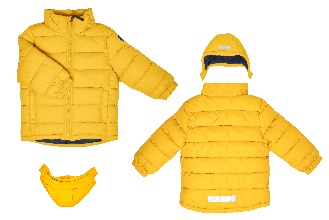
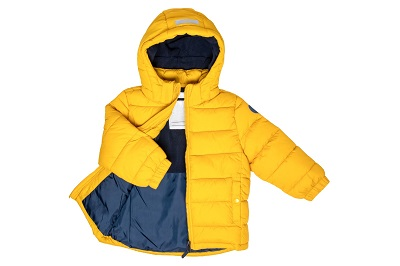
A jacket is a thing that is manufactured or handmade. The detachable hood is a component part of a complex product. The product here is the jacket, that includes the hood as a component. The representations show how the components form together and what the assembled product looks like.
A bank of gaming machines (Design 201816709 [2021] ADO 1)
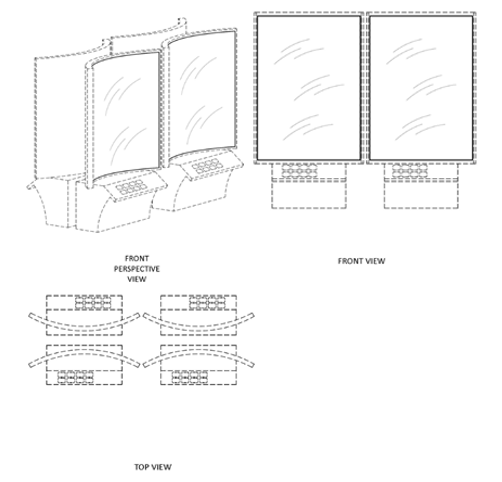
Whilst the product name could be considered a complex product, the representations do not show how the gaming machines are physically connected as a single thing. The representations need to show how the components, in this case the machines, disassemble and reassemble.
Bristles of a toothbrush
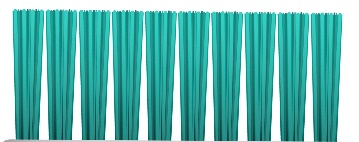
Whilst bristles are a tangible thing, they are a component part of a toothbrush. The bristles are not considered a product in their own right as they are not made separately to the toothbrush and not commercially available for replacement purposes.
Textile square of indefinite length and width
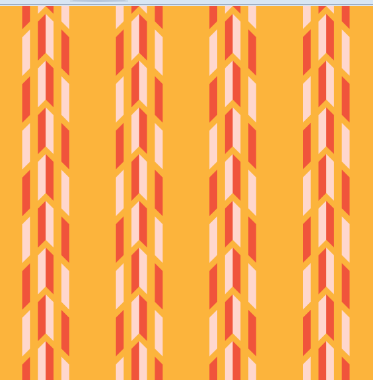
A textile square is a thing that is manufactured or handmade. Textile materials are made and sold in continuous lengths and widths. The key design feature is the repeating pattern.
Plug kit (Design 201510047)
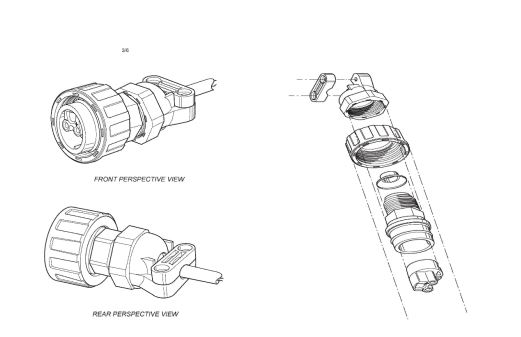
Whilst the representations includes a number of different items, the product name clarifies that the product is limited to the assembled kit of items as a single, physical thing. In this case a plug kit.
First aid kit
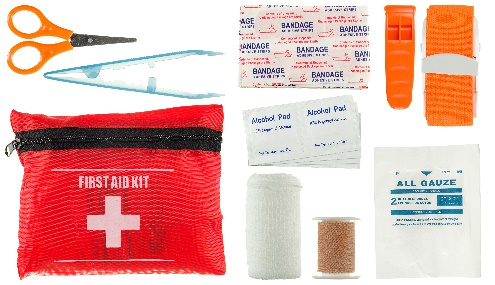
These items do not assemble to make a particular product. Whilst this collection serves the single purpose of performing first aid, together they do not assemble to make a particular product. The product name and representations do not suggest a single product.
Cordless phone and receiver
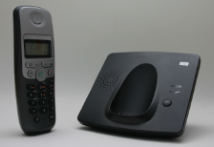
The product name and representation identify two different things. Whilst the receiver may hold the phone, the representation does not show this physical connection and single item. The Registrar will not infer physical connection into representations where it is not clearly shown.
Together the product name and representation do not suggest a single product and design is applicable.
Cordless phone station
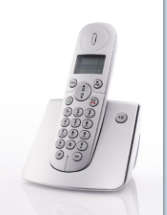
In this case the product name suggests a single, manufactured thing.
The representation shows a single item – the physical connection of the phone and receiver (as a station).
The design is limited to what the name identifies (a single thing) and what the representation shows in terms of the overall shape and other visual features that make up the cordless phone station. There is no design right for the phone / receiver as individual products.
Tap set
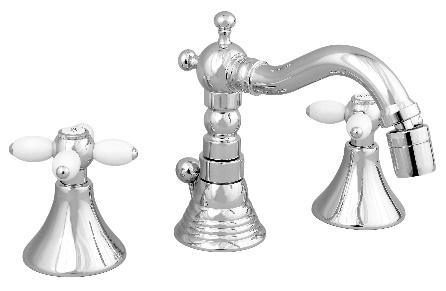
Whilst this set of items may be offered together as a single product for purchase, the representation shows more than one product and design – the design of a tap and a spout. In this situation a common design may be an option to consider.
Bath and shower mixing tap

While the product name identifies that the mixing tap can be used in more than one setting, considered in totality the thing that is manufactured is a mixing tap.
The representation shows a tangible product.
The product name and representation identify a single product design.
Identifying the product
Product Name: Cartridge
Applicant: ABC Shaving, Inc.
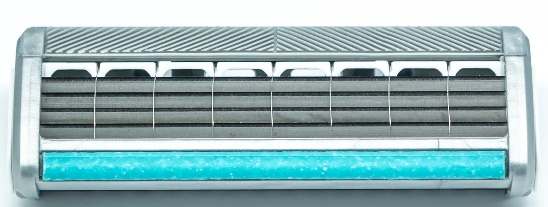
- The product name identifies a thing
- The representation and the applicant name clearly point to the product being a razor cartridge, which itself is clearly classified in 28-03A
- The detail supplied provides a clear enough indication as to what the cartridge is and does – its purpose
- The application detail sufficiently identifies the product to enable classification in accordance with (the Australian classification system, based on) the Locarno Agreement.
Product Name: Nozzle
Applicant: FinGold Enterprises Pty Ltd
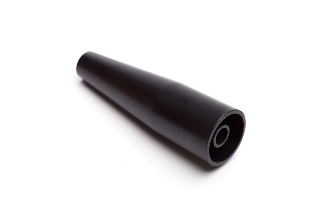
- The product name identifies a thing
- The representation shows a nozzle, but this nozzle could be used in a range of different settings. There is nothing particular about the representation that provides a clear indication as to its function or purpose
- The product name should be queried on the basis that the application particulars do not sufficiently identify the product to allow for correct classification.
Product Name: Modular system
Applicant: Acme Furniture Pty Ltd
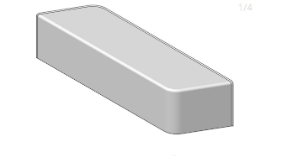
- The product name identifies a system, which at face value does not identify a thing
- The applicant name suggests what is represented is a furniture piece, most likely a base
- The product name is likely a reference to a furniture system where multiple pieces can be assembled and disassembled to meet different configurations
- The product name should be queried, however, as although the representation may show what in reality is a piece of furniture, the product name does not clearly identify a product.
Product Name: Electronic device
Applicant name: Globex Corporation
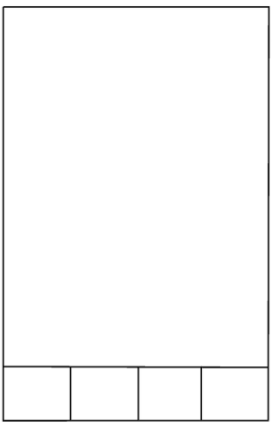
- The product name suggests a manufactured thing
- However, the product name and representation do not tell us enough about the function or purpose of this device to be able to accurately classify it
- The applicant name also doesn’t provide any clues as to what this device may be and its use
- We require the product to be clearly identified so that we can classify it according to the Australian classification system, which reflects the Locarno classification principles of determining the function or purpose of the product bearing the design
- Understanding what the product is also assists if the design is registered and examination subsequently occurs.
Amended Reasons
| Amended Reason | Date Amended |
|---|---|
Deletion in line with clarification regarding pairs. |
|
2021 ADO 1 addition. |
